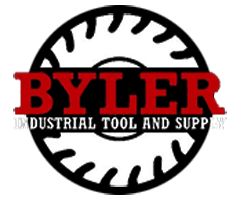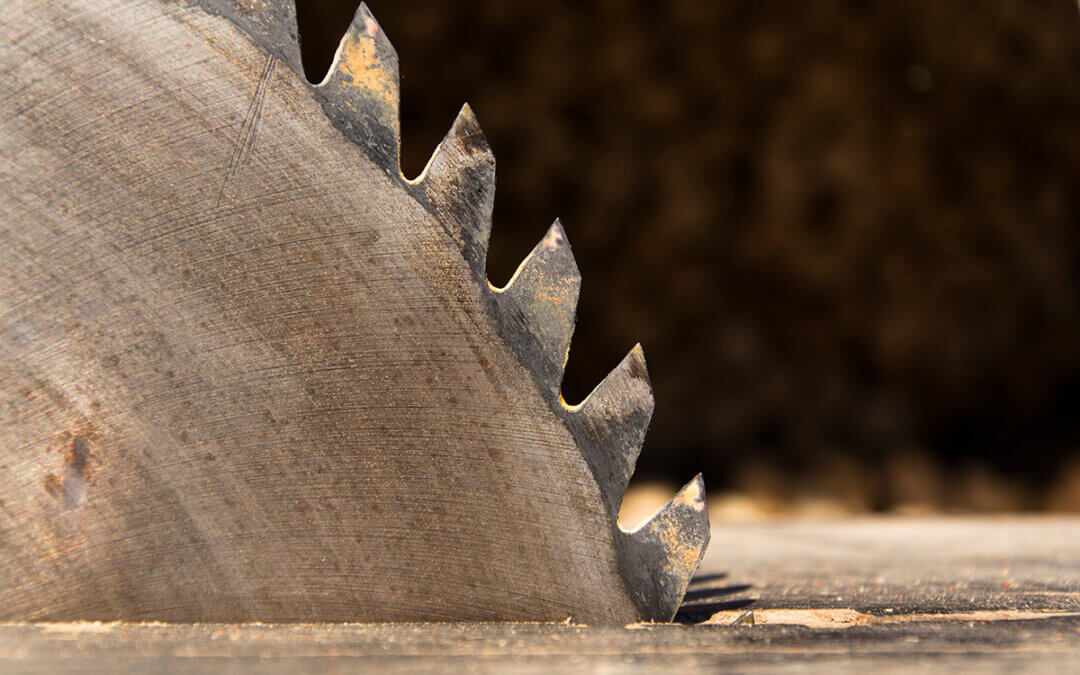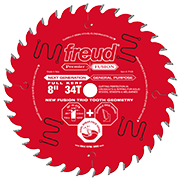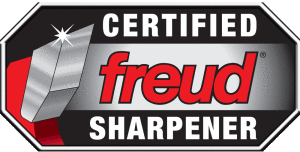Blades don’t become dull overnight. You won’t walk into your shop and one day realize your blades can no longer cut wood or metal. Instead, dulling is a slow process that many people don’t even realize is happening until long after their efficiency, accuracy, and even safety have been compromised for months or even years.
To avoid damaging your finished products, your reputation, and even your fingers, it’s important to act before your blades become dull. However, that’s easier said than done. Dullness creeps in slowly, and it takes a sharp eye and serious attention to detail to notice the problem when it first begins. Here are a few things to look out for every time you make a new cut.
Your Cuts Take More Effort
Perfectly sharp blades should cut through materials easily. You shouldn’t have to put much “muscle” into them to make the precise cuts you want. Small amounts of resistance are common with certain materials, and it takes time to become accustomed to which materials have more resistance than others.
But if you suddenly notice resistance with most materials and most cuts, it can mean your blades are becoming dull. More effort means a greater chance of slipping, which can result in serious injuries. Always be attuned to slight changes in required effort to make cuts and be ready to sharpen your blades before your risk of injury goes up.
Your Cuts Are Less Clean
Another benefit of perfectly sharp blades is clean cuts and perfect lines. If you notice even slightly jagged edges where there used to be none, it can be a sign that your blades aren’t cutting as effortlessly as they used to. Jagged edges can indicate misalignments with the teeth on your blades, which can occur due to dullness and excessive force being applied.
Many wood and metalworkers learn to adapt to less precise cuts over time without realizing it. Carefully inspect all of your cuts to find signs of jagged or rough edges.
You Notice Burn Marks on Wood
If you’re cutting wood with a dull blade, you may notice burn marks. These can occur due to the intense friction and heat generated by the longer contact that your blades have with the wood you’re cutting. When wood is pushed through a blade slowly, which is often the case with dull blades, the likelihood of burn marks increases.
As with the quality of your cuts, you should also carefully inspect the appearance of your wood projects. Burn marks aren’t always obvious right away when blades become dull, but a trained eye can spot them. If you notice burn marks in addition to other telltale signs of dullness, it’s a sign you need to sharpen your blades.
Your Blades LOOK Dull
When your blades take on dull appearance, it usually means one of two things: they are dirty or they are dull. Giving your blades a thorough cleaning is a great way to determine how dull they actually are. If you see jagged edges, bent teeth, or simply an overall dullness even after cleaning, you’ll quickly know the answer.
When blades look dull, it means they’ve lost virtually all of their true cutting power. Dullness sets in on a microscopic level first, which means that the first signs of it begin to show up long before it’s visible to the naked eye.
We’re Ready to Restore Your Blades
No matter what stage of dullness your blades are at, we’re here to help. We have the tools, resources, and experience to provide the ultimate blade sharpening service. Contact us today and let us sharpen your blades to perfection.




